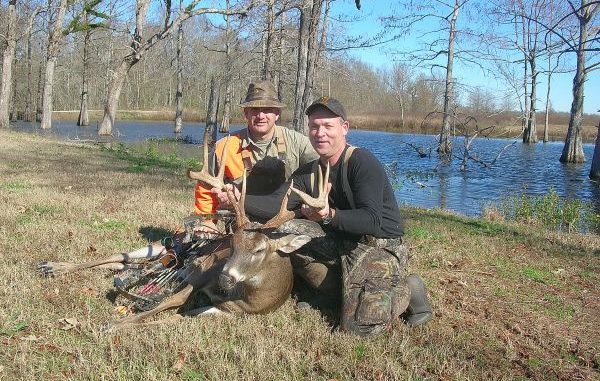
In Dugas’ opinion, food for quality whitetails has to be distributed throughout the entire property 12 months out of the year.
“And if, in the center of the property, you have an agricultural component — that’s even better,” he said.
That’s the approach his family follows.
“Our green-fields management includes winter fields of wheat, oats, winter peas, clover and some hickory,” Dugas said.
However, winter plots are secondary.
“The most important forage is the summer plots,” he said. “These summer plots consist chiefly of forage soybeans and iron clay peas. Of course, we do supplemental feeding, as well.”
This year-round feeding program is crucial to growing quality bucks, he said.
“That yearling, that little button buck, it is very important he gets quality forage his first two years,” Dugas said. “That’s when he needs it the most.
“Problem is, lots of people do it only four- to five- months out of the year.”
Supplemental feeding also is part of the program, and Dugas said it’s important to know how much to feed.
“When using supplemental foods, we use the amounts the manufacturer recommends,” he explained. “If you’re going to do it, the only way to see rewards is to follow all the recommendations from the experts at hand.”
But all the ag plantings and supplemental feeding won’t produce results overnight.
“It’s important to understand that managing for quality deer through quality habitat practices takes time and long-term commitment,” Dugas said. “When we decided to do it, we didn’t see results for three years.
“It was the fourth year when we noted a significant increase in quality deer and that we had been successful. It was quite dramatic.”


